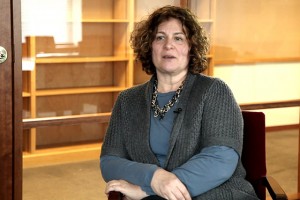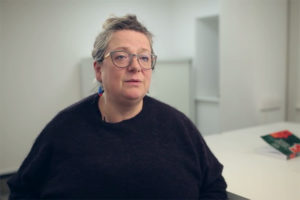Language Acquisition in Children
Psychologist Ben Ambridge on the difficulties with learning languages, a critical period for a new language ac...

For hundreds of years, people have been inventing their own languages because they were dissatisfied with the thousands of languages humanity already has. Why did they do that? How successful were they? And what can we learn from their pursuit of language in general?
When is a language ‘constructed’? Inherent in that word is the opposition to something else, what is typically called a ‘natural’ language. The idea behind natural languages is that they have somehow ‘grown’ naturally, whereas constructed languages are the result of some human activity being involved in creating the language. So what we call a ‘constructed’ language typically is a language where we can firstly pinpoint some individual or maybe some committee who have actively designed something about the language.
The word ‘constructed language’ thus is typically about the origin, namely that we know what this origin is. The issue is that you can make plans and design certain rules, but then the language has to be really used, and then there are always so many different kinds of aspects that immediately become the result of the group of people who use it without necessarily really knowing why they are using it in this way or some other way. Many constructed languages never become anything else than a constructed language – they stay constructed forever because there is just somebody sitting at home, having this great plan, never convincing anybody else to speak it. And if there is nobody else who speaks it, you cannot even really practice it yourself: so it never really becomes anything but a construction.
On the other hand, if a language steps out of the door and other people start using it – things immediately happen to the system, and it becomes something that is difficult to distinguish from a natural language. You may not be able to see it from the language on its own if you do not know its history and how it is constructed.
It is actually easy to explain types of constructed languages in a historical way. It’s about why people make a language and why they construct it. Broadly speaking, in history, there have been three different reasons in the Western world because this is very much a European phenomenon. And they always relate to what people think about language in general: what do we need language for? One might think, “I have an idea about that; I’m unhappy about the way in which existing languages perform this function, so now I would make a language that would do it better”.
The first group is mostly placed in the 17th-18th Century, and the first reason was to make languages that would make us think better. The idea is that language is the instrument of thought, but there are many problems, and we can think things that can be wrong, we can make mistakes, we can lie, so we can say things that are wrong, and if you have a sentence, you cannot see from the form of a sentence on its own whether it’s false or true.
Leibniz was a German philosopher, mathematician, and diplomat. He was also very interested in this problem and tried to make a language in which it would be impossible to say a lie, or if you said a lie, people would recognize the lie from the form of the sentence. There’s an anecdote where he says that his ideal is if two philosophers would ever disagree about anything, they wouldn’t have to quarrel; they would just sit down and say, “Now we calculate”. And then, they would calculate the meaning of the sentence, and from this calculation, it would turn out whether the sentence was right or wrong.
This idea never became very successful, let’s say, just because if you have a language like that, it becomes so difficult to express yourself. A language that is completely logical – you express all logical relations, everything which is true has to be said in this sentence, you have to be so precise, quickly becomes unusable in everyday life.
For everyday language, it turns out that it is actually important that you can sometimes be a bit vague; maybe it’s even important that you can sometimes say a lie; it’s an important part of human communication that we don’t necessarily say exactly the truth. But in some other domains, these ideas still survive. This is what is called ‘a priori languages’ because you make a language all over again; it’s not based on any existing language.
The second idea, which was mostly in the 19th century, was the idea that language is a means of communication. It’s a way to express the ideas in one’s head and to bring them to another’s head. And the problem is that in the 19th century, people started discovering that there were people across other sides of the language border. It becomes easier to travel because of trains; it becomes even easier to communicate because of telegraphy, telephone, and radio. But people all speak different languages. Let us solve that by making a language that is easy to learn for all!
The first kind of language, the ‘a priori’ one, has to make thinking better, and the second one is for solving the problem of communication better so that people can communicate across borders internationally. We’ll make the language which is easiest to learn, which doesn’t have all these problems, such as learning not just a case system, but five different kinds of case, and six different kinds of gender, and irregular verbs and all those things which are easy to learn for a child, but not for an adult. To solve that problem, we make the language easier. Esperanto is the most famous of those, but in the 19th century, there were many of these kinds of projects. All of them share this idea that we need a language for communication, and they were also typically what is called ‘a posteriori’ languages, which means you took existing languages and simplified them. You take the grammar of the language you don’t know, and then you start erasing everything about what you think, “Why do we need that?”. Why do I need to learn five different forms of the verb ‘to have’? We erase all of that, and then you get the grammar of all those languages, many of which were, in the end, very similar to each other.
The third is the more modern project, one of which we see many examples now; that is, you make the language for fun, for beauty. Typically people invent a world for a movie or a book, and then the inhabitants of that world need to have a language. Why won’t you be happy with actors saying random stuff? No, it has to be a real language! Why do people do that? Just because it’s fun, that’s the art. Tolkien was probably one of the first of those. However, even in the Medieval times, people were sometimes making small languages for fun as well, so the boundaries don’t make complete sense, but this is what seems to be the right classification.

Beginning of a poem in Elvish Language created by J.R.R. Tolkien // Wikipedia
What you need to know to create a language depends on what kind of language you want to make. If you want to make this first type of language where everything is completely logical and makes sense, and it doesn’t really look like any existing language, then what you want to do is to study logic. And you don’t probably have to know any other language. If you want to make a language for international communication, what you want to make is a language that is easy to learn for everybody around the world. Then you have to know what languages around the world are like and also what it means to learn a foreign language, what is difficult in learning a foreign language and what’s not. You could say you need to be a linguist.
Also, in creating those languages for art, you might need some kind of linguistic knowledge because typically, what they do is make a language for a certain civilization, for a certain kind of people: you make a language of the elves for a Tolkien world, or you make a language for a warrior people. If we make a language for warrior people, what do we do? It has to sound warrior-like. What we know from linguistics is that people around the world find sounds that you make in the front of your mouth more beautiful: ‘je’, ‘pje’, ‘kje’. Whereas ‘gha’, ‘ra’, ‘wra’ – that’s supposed to be more ugly. So if you want to make a language of the elves, you want to have many sounds like ‘chje’, ‘pje’, ‘kje’, and if you want to make a language of warriors, you want to have many ‘wra’, ‘ra’, ‘gra’. But people might just feel that without knowing it explicitly.
What’s more important than having theoretical knowledge is having some kind of feeling for language, of feeling what works and what doesn’t work. Creating a language is more like an art form than a science. There is a book called The Art Of Language Invention by an American linguist David J. Peterson, who created the languages for the ‘Game of Thrones’ series. It is actually a very nice book because it is an introduction to linguistics, but from the point of view of creating a language: suppose I want to create a language; I first have to think of what the sounds of my language are, then I have to think how people make words out of those sounds, how they make sentences of those words, how they use those sentences, how they use the language when being friendly to each other, etc. Peterson makes it almost into a scientific discipline, but I believe the most important thing still (probably also for him) is a kind of skill. I see most of those languages as a kind of art. If you are a painter, do you need to know chemistry? Maybe it helps a little bit, but it’s not that necessary.
Volapük and Sounds
Volapük is an interesting example of a constructed language. It was invented just before Esperanto. Most of the words in Volapük are based on English, but, as the creator Johann Martin Schleyer thought, simplified them. He had heard that the Chinese don’t make a difference between ‘l’ and ‘r’, so the word ‘world’ (‘Volapük’ means ‘world’s speech’) turns into ‘vol’ – he threw out the ‘r’ and left the ‘l’. At the same time, ‘volapük’ has this ‘ü’ vowel, which very few languages in the world have. But he was German, he thought, this sound is so beautiful, so we need to have it.

The motto of Volapük: “One Mankind, One Language” // Wikipedia // Charles E. Sprague, 1888
So, we might say: we want to do this better. We’ll have only sounds that can be used in all languages of the world, which all the people around the world know. Then what you get is the vowels ‘a’, ‘i’, ‘u’, which is a good guess, but still, there’re some languages that are claimed to have only ‘a’. So what we are left with is ‘a’ – the only vowel that all the people can say. For the consonants, there’s a similar story: there are ‘t’ and ‘m’, maybe. So now we can say ‘ta’, ‘tata’, ‘ma’, ‘mama’… These are words that are very easy to pronounce for everybody, but what can we do? We can create extremely long words to combine ‘ta’ and ‘ma’ in all kinds of combinations. That language becomes impossible to remember or understand because all words sound the same. Eventually, you have to make a bit of compromise, so we can add a few more vowels, like ‘i’, ‘u’, ‘e’, and ‘o’ – those are also very common in languages of the world. But again, it’s kind of an art form. There’s no scientific method for saying, “This is how it has to be done”.
Interlingua and Words
There is one language that was established by a scientific committee; this was a language called Interlingua. This was in the 1950s. There was an eccentric old lady, who was also very rich, and who thought, “We’re going to solve this problem now, once and for all, in a scientific way”. She hired some young, but some of them very prominent, linguists, including the French linguist André Martinet, who was one of the greatest French linguists of the 20th century, to make a language scientifically. They were mostly concerned about words. They apparently wanted to make a European language, so they took the seven major European languages, and for every word, they looked at what this word in all those seven languages was, and then the majority would win. The result of that was a language that looks very much like Latin – it’s basically a kind of simplified Latin. So even if somebody knows a few languages and maybe also understands a few concepts of linguistics, the main thing is still the art. It’s really an art to make a good language.
In 1993 the Italian intellectual Umberto Eco wrote a book, which is called The Search for the Perfect Language. In that book, he says that there were two quests in the 19th century: one of looking for the ancient language, from which other languages were derived (the proto-language), and the quest for a better language, which is not in the past but in the future. These two quests started from the same origin. The problem with reviving, say, the proto-Indo-European language would be that it was also a natural language with all those complications, on which you might say, “Why do we need them?” You have a language that is still complicated, which doesn’t have any words for anything modern, where ‘modern’ means anything which was invented in the last 4000 years, so you have to make many new words anyway.
Reviving languages has been done. There is one clear case; this is Hebrew. It was never really dead, though 150 years ago, Jews would know some Hebrew, but mostly so that they could recite the Bible – you couldn’t buy anything in the shop talking Hebrew. But it is now again a living language, so it’s apparently possible.
Our international English, Globish as it is sometimes called, is not a constructed language; for who would be the constructor? There is no specific person or group of persons who have constructed it. But what is interesting about it is that it’s becoming neutral. It’s not a constructed language, but it has one property that typically all constructed languages also have – it doesn’t have native speakers. This neutrality makes it quite suitable for international communication. There’re, of course, native speakers of English, but you might say they are at a disadvantage speaking international English because they are used to all their idioms, and complicated constructions, and sounds, and they don’t even know how difficult it is. If this international kind of English becomes even more prestigious, then you could say it can solve the problems those artificial languages were designed to solve – it gives you the language of international communication, which is fairer. It doesn’t put certain people at an advantage. It’s still not completely fair, it’s a European language with clear European roots, and it’s still more difficult for a Chinese person than for a Dutch or a Russian. But it definitely is an interesting new kind of language; it seems to be the kind of solution the world is heading to. And it’s not bad in all ways.
Edited by Polina Sandler

Psychologist Ben Ambridge on the difficulties with learning languages, a critical period for a new language ac...

Harvard Prof. Maria Polinsky on introducing two languages, the importance of literacy and advantages of biling...

Neurobiologist Sophie Scott on human speech, exaggerating gender differences, and the perception of voice info...